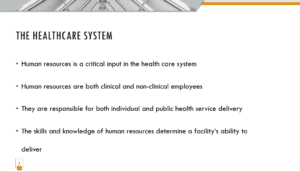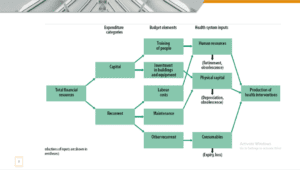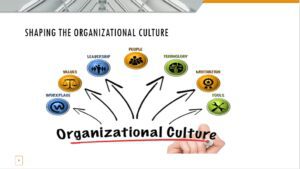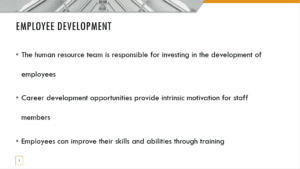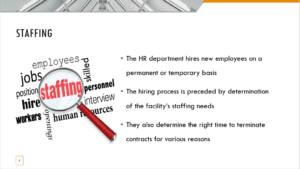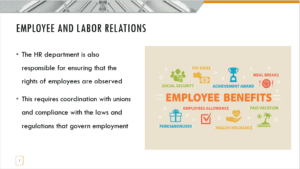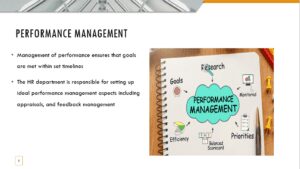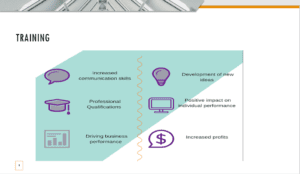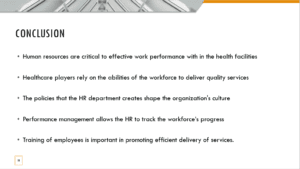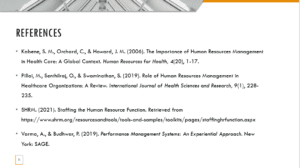Role of Human Resources Management in the Healthcare Industry
Hello. Welcome to today’s presentation. Today, we shall discuss the role that human resource management plays. The presentation’s focus is on the healthcare industry. Various activities, including staffing and employee development, will be highlighted and discussed in depth. A brief peek into the healthcare system is also provided herein. This discussion invites any additional roles from the audience or critical thoughts regarding the compiled content. Enjoy.
All the clinical and nonclinical employees constitute human resources in the healthcare industry. A healthcare facility can deliver services to its clients through human resources. Their ability, knowledge, and skills are crucial in ensuring efficient service delivery. The main inputs differ in importance. Thus, human resources should receive different treatment and management. This recommendation is because human resources are people requiring extra care. The complex relationship between the employer and the employees requires establishing practices that facilitate their commitment and involvement in their health delivery obligations (Kabene, Orchard, & Howard, 2006).
The health care system is supported by three main inputs: physical input, consumables, and human resources. As shown above, the healthcare system has different elements. The expenditure categories consist of capital and recurrent. The budget elements include people training, investing in buildings and equipment, labour costs, maintenance, and other recurrent aspects. The main inputs include human resources, physical capital, and consumables. Of great importance to the current topic is the critical role that human resources play in healthcare service delivery (Kabene, Orchard, & Howard, 2006).
The HR department’s first role in the healthcare industry is to shape the organizational culture of a healthcare facility. The culture of a health facility determines the quality of care that patients receive from the clinical and nonclinical staff. Culture is shaped by the values, policies, and competencies an entity relies on for daily operations. Thus, HR managers clearly define these elements that constitute the organizational culture and provide descriptions that aid in understanding. Furthermore, they conduct training sessions that enable employees to internalize and grasp the critical aspects. Any organization in the healthcare sector ought to incorporate creativity and innovation, which can be achieved through teamwork and decentralized approaches (Kabene, Orchard, & Howard, 2006).
Employee development is a responsibility that the HR department must fulfil in the healthcare industry. The training process is one of the common avenues for employee development. It motivates employees by preparing them for internal and external opportunities. A needs analysis should guide the training of employees. This assessment highlights the critical aspects employees need further training on to achieve goals and objectives. It also enables employees to perform their roles and responsibilities efficiently or as expected. Active engagement of employees in the fulfilment of this role promotes its success. Ensuring that all employees remain current with the new developments in the healthcare industry improves the overall quality of care and patient experience (Pillai, Senthilraj, & Swaminathan, 2019).
The staffing needs of an organization in the healthcare industry must be assessed before recruitment. The identified needs guide the recruitment process as the HR department advertises for specific positions and expertise. The HR department should utilize various accessible technology to maximize the recruitment process. Employees can be hired on a temporary or permanent basis. An ethical guide should govern all staffing practices, such as termination of employment, interview, and offering employment benefits and compensation. All these practices should be within the legal confines to avoid litigations (Pillai, Senthilraj, & Swaminathan, 2019).
Employee and labour relations are the HR department’s critical role. Employees have rights that the HR department must ensure are observed. This means that any policies it creates should consider these rights. This guides other managers and employees and avoids cases of violations. Various regulations govern the work environment and employee welfare. These laws affect all sectors and address equality, remuneration, benefits, discrimination, safety, and fair treatment of all employees. The HR department also addresses any conflict involving employees and employers (SHRM, 2021).
Performance management is essential for the success of all organizations in different sectors. It allows the organization to assess all staff performance and set goals used during the monitoring process. Feedback and goal setting are critical to the successful management of performance. The implementation of management involves several elements, such as appraisals. The frequent meetings that the HR professionals hold with staff allow them to monitor the progress of each individual. Before this, the HR department must engage the employees in the goal-setting process. When employees set goals, they are more committed towards their achievement. Performance management creates a culture of feedback and creates efficiency (Varma & Budhwar, 2019).
Training of employees is one of the channels that the HR department in healthcare organizations uses to motivate employees, increase profits, improve communication skills, and nurture innovation. The training programs improve staff members’ skills and knowledge, ensuring they are all within the same level. This creates a seamless flow of work activities and enhances the patient experience. Training employees also enables the workforce to gain a competitive advantage over the other players in the sector. For training to be practical, it should be conducted regularly. Exercise is recommended for all organizations because it promotes organizational performance positively (Pillai, Senthilraj, & Swaminathan, 2019).
References
Kabene, S. M., Orchard, C., & Howard, J. M. (2006). The Importance of Human Resources Management in Health Care: A Global Context. Human Resources for Health, 4(20), 1-17.
Pillai, M., Senthilraj, O., & Swaminathan, S. (2019). Role of Human Resources Management in Healthcare Organizations: A Review. International Journal of Health Sciences and Research, 9(1), 228-235.
SHRM. (2021). Staffing the Human Resource Function. Retrieved from https://www.shrm.org/resourcesandtools/tools-and-samples/toolkits/pages/staffinghrfunction.aspx
Varma, A., & Budhwar, P. (2019). Performance Management Systems: An Experiential Approach. New York: SAGE.
ORDER A PLAGIARISM-FREE PAPER HERE
We’ll write everything from scratch
Question
Create a 10- to 15-slide Microsoft® PowerPoint® presentation in which you:

Role of Human Resources Management in the Healthcare Industry
Analyze human resources management’s role in the healthcare industry.
Describe the functional roles of the human resources department.
Cite a minimum of 2 references according to APA guidelines.
Include a title slide and a references slide.


